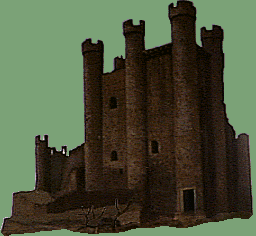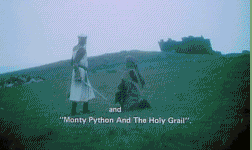I’ve spent two days on something that I wanted to do long time ago but postponed because of various reasons including complexity. But now thanks to Ghidra I’ve finally managed to pry into resources of Monty Python and the Quest for the Holy Grail and decode videos (and more!) stored there.
Probably it was VP7 (again) that made me look into it, but since Ghidra has decompiler for 16-bit code as well, I’ve tried it on libraries of surprisingly small game engine (pity that ScummVM does not even plan to support it but I’m in a similar situation with codecs). And what do you know, they have a special library dealing with resource files that included unpacking images (but not audio—there’s audio library for that).
First, let’s talk about resource file organisation and why it baffled me for too long. The files are organised into several chunks: header that contains offsets of the other chunks at the end of it (around bytes 0xE2..0x141), then you have actual table of contents (more about it later), then some small binary data chunk, then list of strings related to file names, then some chunk that looks like game script (in binary form), then palette and finally another list of strings that looks like variables list. It is no wonder I could not do anything useful with it since actual table of contents is hidden somewhere near the end of file but not exactly at the end. Also each game scene corresponds to its own archive which makes it clearer what to expect there (previous version used in Monty Python’s Complete Waste of Time even has a description right in the header and table of contents stored right after it, I might look at it later but no promises).
Now, files in the resource archive. The catalogue has only file type, its size and offset in the archive and nothing else. There are more than a dozen file types, 1 being images (both background and sprites), 2 being movies (the thing I was hunting), 4 is for MIDI tracks, 9 is for digitised audio, the rest I don’t care about.
Let’s move to simple things like music and audio. Music is stored in its custom format with four bytes per command except when high bit is set (then it’s delta time for next command). Why so? Probably because it’s being played by sending single MIDI commands and at least on Windows it requires packing them into 32-bit word anyway. Audio is stored in files with some header and either raw form or with IMA ADPCM compression. The notable thing is that it does not use any multiplications in any form—instead it has precomputed table for all eight possible values for each step.
Images are another interesting topic. First of all, palette is stored as 944-byte file with 32-bit entries (so it’s just 236 colours) but somehow decoded files use it with bias of ten, i.e. decoded index 13 corresponds to palette entry 3, index 27 is for entry 17 etc etc. I have no idea what it does with first colours in the palette (though sometimes images are not colorised properly so maybe they need different palette bias or a different palette at all).
Second, images employ two different compression schemes: RLE and LZW. RLE is rather trivial except that it uses opcode zero to signal end of line (and double zero for end of image):

LZW-compressed image splits image into chunks that may be uncompressed or compressed with LZW using 10, 11 or 12 bits per index. And after all these years I was still able to correctly guess it was LZW and write a decoder that worked fine without resorting to any documentation or even studying the decompiled code (I just needed to realize that it reads sequences of n-bits indexes and does something with them to output bytes).
And finally the movie format. Those are actually stored in two files—movie data and companion frame index (i.e. frame type, size and offset). After extracting frames I could not realize what to do with them until I noticed that frame type 2 all have the constant size of 11025 except for first few. Obviously they turned out to be IMA ADPCM compressed audio frames (and since they were the first frames in every movie it was hard to guess the format looking at semi-random data without header). Frame type 0 turned out to be the same image format as normal pictures.

Frame type 1 turned out to be inter-frames that use index 0 for pixels that should not be updated.
Unfortunately even if I now have a way to decode the files I cannot add direct support for them in NihAV since it requires at least three different files to play it (palette, frame index and frame data). At least now I know I can transcode them into something when the need arises.
Now let’s talk about Ghidra a bit. Without it this probably would have not happened since I’m not that young to spend time on translating tons of disassembly (and REC failed to do a good job). Ghidra support for 16-bit code is far from perfect with all that mess with far pointers consisting of two 16-bit words, external DLL functions linked by ordinals (so I had to match them by hoof and rename where possible) and general confusion with int treated as 4-byte in some contexts but 2-byte in another. And yet it did the job and helped me to understand how the game libraries work and that’s what really counts.
And as a bonus here’s a team photo extracted from concentration mini-game related to the witch scene (not the Simon Says clone with fires but probably Match Two clone that I’ve never seen in-game before):

Nice adventure!
[…] finally had time and documented my findings so if somebody is interested in it he can have at least something to start […]
[…] the previous post I’ve mentioned that one of the levels contain an unfinished witch puzzle probably based on […]